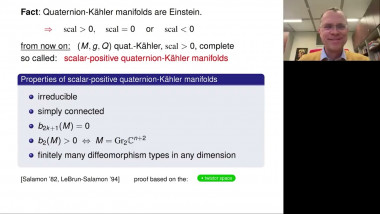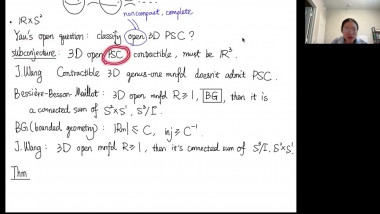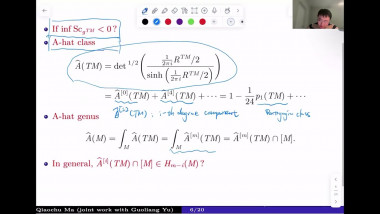Apparaît dans la collection : Real singularities and applications / Singularités réelles et applications
Caustics appear in several areas in Physics (i.e., geometrical optics [10], the theory of underwater acoustic [2] and the theory of gravitational lensings [11], and so on) and Mathematics (i.e., classical differential geometry [12, 13] and the theory of differential equations [6, 7, 15], and so on). Originally the notion of caustics belongs to geometrical optics, which has strongly stimulated the study of singularities [14]. Their singularities are now understood as a special class of singularities, so called Lagrangian singularities [1, 16]. In this talk we start to describe the classical notion of evolutes (i.e., focal sets) in Euclidean plane (or, space) as caustics for understanding what are the caustics. The evolute is defined to be the envelope of the family of normal lines to a curve (or, a surface). The basic idea is that we may regard the normal line as a ray emanate from the curve (or, the surface), so that the evolute can be considered as a caustic in geometrical optics. Then we consider surfaces in Lorentz-Minkowski $3$-space and explain the direct analogy of the evolute (the Lorentzian evolute) of a timelike surface, whose singularities are the same as those of the evolute of a surface in Euclidean space generically. This case the normal lines of a timelike surface are spacelike, so these are not corresponding to rays in the physical sense. Therefore, the Lorentz evolute is not a caustic in the sense of geometric optics. In Lorentz-Minkowski $3$-space, the ray emanate from a spacelike curve is a normal line of the curve whose directer vector is lightlike, so the family of rays forms a lightlike surface (i.e., a light sheet). The set of critical values of the light sheet is called a lightlike focal curve along a spacelike curve. Actually, the notion of light sheets is important in Physics which provides models of several kinds of horizons in space-times [5]. On the other hand, a world sheet in a Lorentz-Minkowski $3$-space is a timelike surface consisting of a one-parameter family of spacelike curves. Each spacelike curve is called a momentary curve. We consider the family of lightlike surfaces along momentary curves in the world sheet. The locus of the singularities (the lightlike focal curves) of lightlike surfaces along momentary curves form a caustic. This construction is originally from the theoretical physics (the string theory, the brane world scenario, the cosmology, and so on) [3, 4]. Moreover, we have no notion of the time constant in the relativity theory. Hence everything that is moving depends on the time. Therefore, we consider world sheets in the relativity theory. In order to understand the situation easily, we only consider 2-dimensional world sheets in Lorentz-Minkowski $3$-space. We remark that we have results for higher dimensional cases and for other Lorentz space-forms similar to this special case [8, 9].
![[1244] Minimal surfaces via equivariant eigenvalue optimization](/media/cache/video_light/uploads/video/SeminaireBourbaki.jpg)















